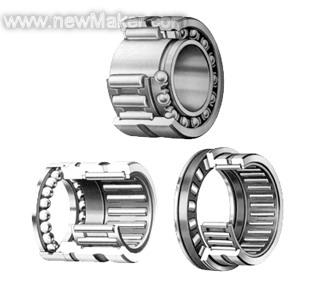The release bearings in the clutches of internal combustion forklifts are prone to frequent failures, and damage to these components accounts for a significant portion of overall forklift malfunctions. If the driver operates the vehicle properly and performs regular maintenance, the bearing can typically last around three months before needing replacement. However, if the driver lacks technical skill, the release bearing may be damaged as often as once a month. Once damaged, other parts such as the release lever and clutch plate are also affected, leading to increased material costs for equipment maintenance.

What causes the release bearing to fail so frequently? In practice, drivers are required to lubricate the bearing every time they use the forklift, but this process is not only cumbersome but also ineffective, as the bearing still tends to fail. According to analysis, high engine temperatures transfer to the release bearing, and the high-speed rotation of the bearing itself also generates heat. Under these conditions, the grease struggles to stay in place, resulting in poor lubrication and frequent damage.
To address this issue, some attempts were made to pre-heat the grease to help it penetrate into the bearing. After treatment, the grease filled the bearing, but the high temperature destroyed the grease, reducing its effectiveness. This method did not yield satisfactory results, and the bearing’s lifespan was not significantly extended. Another approach involved using a sharp-nozzle grease gun to directly lubricate the release bearing. After installation, the bearing’s service life improved noticeably. Although this method worked well, it was more complicated to perform.
Then, I explored an alternative method that didn’t require disassembling the engine. First, the 475C engine was tested successfully, followed by the 475C, 480, and 492 models. All showed good results. After repeated trials, improvements, and experience accumulation, a relatively simple oiling method was finally developed. The specific steps are as follows:
(1) Oil Filling Without Disassembling the Engine. First, open the clutch cover and check the wear of the release bearing. If the bearing is undamaged or within acceptable limits, remove the clutch pedal, adjust the connecting rod pin, and move the release bearing and its return seat to the farthest position. Use a grease gun to fill the bearing housing hole until grease overflows. Then slightly rotate the bearing and refill until a small amount of grease appears around the bearing. Rotate the bearing and observe the amount of oil. If there's resistance when rotating, it means the bearing is fully greased. Remove a small amount of excess grease from the release housing, then reassemble the removed pin and clutch cover.
(2) Oil Filling With Engine Disassembly. Disassemble the engine to expose the release bearing assembly and the bearing housing. Use the grease hole to inject grease into the small oil hole located below the inner ring of the bearing housing. When grease starts to overflow, rotate the bearing until the inner ring is fully filled with grease. After applying these two methods, the bearings could operate without oiling for up to six months.
After testing the oiling method at Hengshui Railway Station, the mechanical integrity rate improved significantly, and substantial economic benefits were achieved. It helped reduce material costs, increase loading and unloading volume, and boost capacity by 30 tons per month. This method has since been promoted across other railway stations, where it has consistently delivered positive results.
Guangdong Heidler Technology Co., Ltd , https://www.hyhemit.com